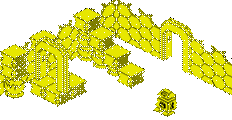Sinclair QL
Vital Statistics
Introduced
January 1984 |
|
![]()
What's it like today?
Fun Factor: 2/5
|
| Sinclair QL | £40-£120 |
The QL (or Quantum Leap) was Sinclair's first attempt at a business machine. It was introduced in January 1984, following the successful earlier Sinclair computers, the ZX80, ZX81 and ZX Spectrum. Indeed it was the first home computer based on a 32-bit CPU, released just a few days before the Apple Macintosh. It differed from the previous Sinclair models quite substantially, as they had all been based upon the Zilog Z80 processor. The QL, however, had at its heart a multitasking system based upon the Motorola 68008 processor and an 8049 second processor. The operating system, QDOS, was regarded as innovative, and well ahead of its time.
It came bundled with 4 business programs written by Psion: Quill (a word processor), Archive (a database program), Easel (a business graphics and charts program), and Abacus (a spreadsheet). It also came with a BASIC interpreter in ROM, called SuperBASIC.
It was strategically important for Clive Sinclair to unveil the QL before the Macintosh, but that was also one of the main reasons for its slow sales and eventual downfall. It is often said that the launch of the machine went some way to killing off the computer's chances of success - launch delays, unfinished operating system, bug-ridden BASIC interpreter, partly finished software supplied with the machine, and the use of Sinclair's Microdrive tape cartridges instead of the floppy disk drives that most would have preferred at the time for a home and business computer.
Once in the hands of users and with updated system ROMs, the machine was able to prove itself quite readily, especially when floppy disk drive systems and good software became available. But by then, the national press had already had a field day basing reviews of the machine on the bug-ridden launch version. The QL never really recovered enough to gain the reputation it really deserved. A drastic price cut (halving the QL's price) helped, but eventually Sinclair chose to sell his computer business to Amstrad, who decided to discontinue the QL.
Long after the QL was discontinued, two replacement operating systems have been written for it by enthusiasts: SMSQ/E and Minerva.
Enthusiasts
 The Sinclair QL has enjoyed a long-running and enthusiastic fanbase since its heyday. Probably the largest user group for the QL are QUANTA (QL Users and Tinkerers Association) which is run byNorman Dunbar. They produced a monthly/bi-monthly magazine dedicated to all things QL from 1984 to 2015, and are still active in the QL scene.
The Sinclair QL has enjoyed a long-running and enthusiastic fanbase since its heyday. Probably the largest user group for the QL are QUANTA (QL Users and Tinkerers Association) which is run byNorman Dunbar. They produced a monthly/bi-monthly magazine dedicated to all things QL from 1984 to 2015, and are still active in the QL scene.
Another group was the subscription magazine, QL Today, which was the definitive source for news and information around the QL scene in its time. It included not only news and articles about the QL, but about its compatibles and emulators too. It catered for everyone from beginners to advanced users. QL Today was set up in 1996. Each issue consisted of up to 60 pages and was only available by subscription on mail order from Jochen Merz Software or QBranch. The magazine was most recently edited by Geoff Wicks, and had its last issue in 2013.
Numerous other magazines have been created over the years including Club-QL, QL Hackers Journal, QL Forum, QItaly, QL-Mag, and SQLUG.











